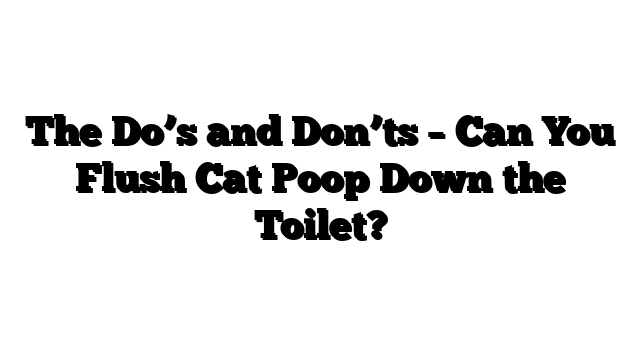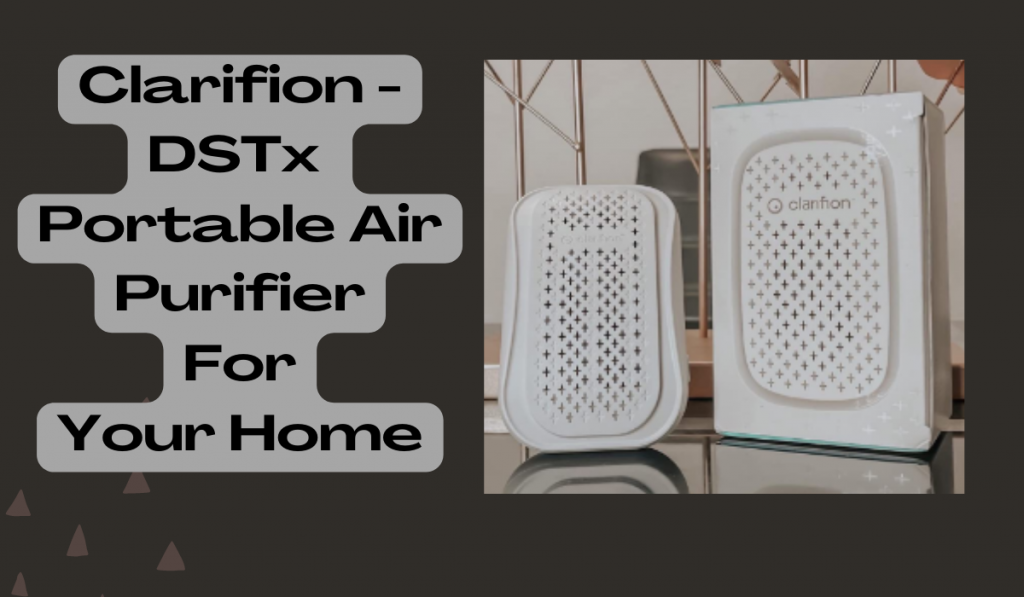Whether to flush or dispose of cat poop in the trash is a common dilemma faced by many cat owners. While the toilet may seem like a convenient disposal option, flushing cat feces can have serious health, environmental and plumbing repercussions that many pet owners are unaware of. This comprehensive guide will explore all aspects of cat waste disposal and address the myths and realities surrounding flushing. We’ll examine the composition of cat poop, the risks it poses to plumbing and public health, as well as legal regulations. Alternative disposal methods and expert advice from veterinarians and plumbers provide the facts needed to make an informed decision about how to safely handle cat waste.
What’s in the Poop?
Cat waste contains more than just solid and liquid waste. When you take a closer look at what’s in kitty’s poop, it becomes clear why flushing it can cause issues.
Cat feces contains pathogens that can spread illness if they enter the water system. Toxoplasma gondii is a parasite commonly found in cat poop that’s particularly concerning. It causes the disease toxoplasmosis, which has been linked to birth defects in humans. Cats are the definitive host for this parasite and can shed millions of oocysts (eggs) in their waste each day that can survive in the environment for months if left untreated.
Other germs like giardia, salmonella, campylobacter, and cryptosporidium are commonly found in cat poop as well. These pathogens pose health risks if someone comes into contact with waste-contaminated surfaces or water. Some parasites like roundworms can even infect other animals and spread throughout the environment.
Beyond disease-causing microbes, cat feces is high in ammonia. When flushed, it breaks down into nitrates and phosphates that over-fertilize bodies of water and contribute to algae blooms as nutrients accumulate. So not only is cat poop risky from a health perspective, but the environmental impact of the nitrogen-rich waste should also be considered.
Flushing vs. Landfills
When considering the environmental impacts of cat waste disposal, landfilling generally poses fewer risks than flushing. While both methods introduce pathogens and nutrients into the environment, the concentrations and pathways differ in important ways.
If flushed, cat feces along with its pathogens and excess nutrients would enter sewer systems. Treatment plants are designed for human waste, and they may not adequately treat or contain pet waste and spread diseases further. Ultimately, any untreated waste would end up in rivers, lakes or oceans where excess nutrients can accelerate algal growth and wildlife die-offs.
In a landfill, pathogens in buried cat feces have less direct contact with people, plants, and wildlife. The high temperatures and lack of oxygen in modern landfills also help break down pathogens more quickly over time. While landfilling introduces nutrients, the concentrations are lower than dumping untreated sewage and runoff into waterways. According to a Plumbing Solutions spokesperson, the controlled environment of a landfill is a safer method of containment compared to flushing wastes into septic or municipal systems.
Plumbing Concerences
Toilets are not designed to process anything more substantial than human waste. Flushing litter, entire waste clumps, or especially large volumes of cat feces puts a serious strain on plumbing systems.
The solids and grit in cat poop are more likely to cause clogs than human waste alone. Hair, dander, clay litters and any undigested food bits add to the clogging risk. Over time, a toilet can become overwhelmed as waste builds up in the traps. Clogs block flow and waste backups threaten both household and municipal sewer lines.
According to Plumbing Solutions, the finer particles in cat waste are also more likely to bond to pipe walls over time compared to human waste. This gradual accumulation contributes to a buildup called “fatbergs” that severely restrict flow. Clearing these blockages often requires expensive, specialized machinery to break them up.
Even when flushed solids clear plumbing, it’s not guaranteed the particles will remain dissolved or dispersed throughout transport. Additional settling or adherence to surfaces can initiate late-forming clogs anywhere downstream. Municipal treatment plants may have difficulty processing solids not intended for their systems as well. Overall, introducing cat waste puts undue pressure on infrastructure that increases maintenance and repair costs.
Health Risks
Beyond stresses to plumbing, flushing cat feces directly endangers public health through disease transmission. As discussed earlier, common cat parasites like Toxoplasma gondii and roundworms pose serious health risks if accidentally consumed through contact with waste or contaminated water sources.
Parasitic and bacterial infections from cat poop have been well documented. People cleaning litter boxes without adequate protection are especially susceptible. However, even those far removed from direct exposure could become infected if municipal water gets contaminated by untreated pet waste flushed into sewer systems untreated.
Drinking water treatment facilities are designed for filtering human waste, not animal pathogens which can survive conventional chlorination. According to a Plumbing Solutions spokesperson, it’s estimated around 12,000 cases of disease occur each year in the U.S. due to recreational exposure to water contaminated with animal waste runoff. Toxoplasmosis, in particular, has caused severe issues or fetal deaths when mothers drink water carrying oocysts from cat feces.
Anything flushed travels to estuaries and oceans as well. Shellfish and fish concentrate pathogens in their tissues, acting as vectors when consumed raw or undercooked. Untreated sewage discharges threaten ecosystems and recreational areas through pathogen pollution. Overall, introducing cat waste into water systems presents clear public health dangers best avoided.
Safe Disposal Alternatives
Responsible pet owners have disposal options beyond flushing to consider for cat waste. Some alternatives minimize health, environmental, and plumbing risks:
- Burying feces in the yard or garden where it undergoes natural decomposition, isolating pathogens from contact. A depth of at least 7 inches provides containment.
- Double-bagging used litter and feces in secure trash bags for disposal in ordinary outdoor garbage. Modern landfills offer containment.
- Some areas provide yard waste or pet waste pickup services specifically for bagged animal waste. Check local waste management for options.
- Litter-absorbing products like carbon- or ash-based litter help encapsulate waste for safer disposal with lessassociated mess or odors.
- Composting enclosed litter boxes separate from vegetable plots could decompose waste naturally where temperatures kill pathogens over time if properly maintained.
- Flushable litter options leave less residue for disposal but still carry health and plumbing concerns if flushed in large amounts regularly.
Overall, protecting plumbing infrastructure and avoiding waterborne illness risks motivate using trash disposal, composting, or burying alternatives over reliance on flushing for cat poop.
Legal Implications
While flushing cat waste may seem convenient, legal restrictions exist in many regions to protect public health and infrastructure. Municipal sewer use and stormwater ordinances often ban disposing of pet waste through toilets or storm drains:
- Most municipalities prohibit flushing animal waste due to documented plumbing damage and disease risks. Fines apply for noncompliance.
- Cat poop constitutes an “illicit discharge” under the federal Clean Water Act if flushed into waterways.
- EPA regulations require publicly owned sewage treatment plants eliminate combined sewer overflows due to plant failure risks from non-human waste loads.
- Stormwater discharge permits regulating contaminant levels in water exiting cities put limits on acceptable pet waste contributions through storm drains connected to local water bodies.
Enforcing bans proves challenging given the volume of waste. However, ongoing community education and some real-life prosecutions help raise compliance by discouraging casual flushing habits. Overall, legal ramifications exist and will likely increase with further understanding of risks from pet waste water pollution. Citizens shoulder responsibility for proper animal waste disposal.
Expert Advice
Veterinarians universally advise against flushing cat litter or feces. As animal medical professionals, they understand risks from zoonotic pathogens too well. They cite preserving public health as the top concern against introducing fecal matter into municipal water systems or septic tanks.
Plumbers echo environmental and plumbing system protection as primary reasons against flushing cat waste. According to plumbers surveyed by Plumbing Solutions, health hazards rank second in importance. One spokeperson stated, “We deal with sewer clogs and backups frequently related to pet waste flushed inappropriately. It’s a totally preventable cause of drain clogs costing homeowners plenty.”
Vets and plumbers agree that burying, double-bagging for trash, and composting offer safer alternatives concentrating waste where it decomposes naturally. Non-flushing disposal methods keep both household plumbing repairs and larger environmental problems to a minimum. They uniformly recommend never flushing litter for convenience due to certain risks outweighing benefits. Public and ecosystem safety carry more weight than personal disposal ease.
James Martin is a passionate writer and the founder of OnTimeMagazines & EastLifePro. He loves to write principally about technology trends. He loves to share his opinion on what’s happening in tech around the world.


